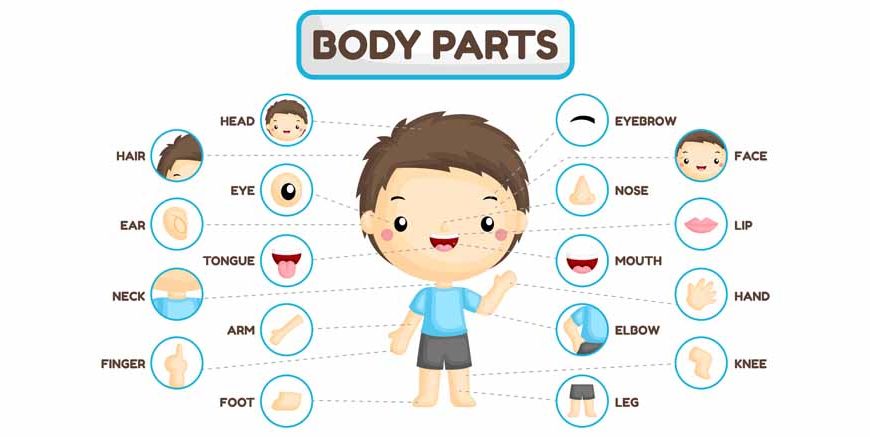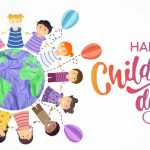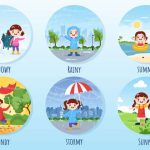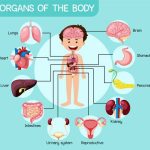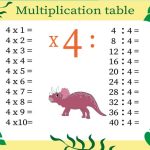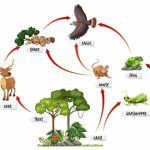Children are naturally fascinated by their own bodies. From pointing at their tiny toes to laughing when someone taps their tummy, recognising body parts for kids is an exciting part of early learning. Teaching children to name, identify, and understand their body parts lays the foundation for self-awareness, vocabulary building, and better communication. At EuroKids, we believe that concepts such as my body parts for kids should be taught in ways that are fun, interactive, and easy to remember.
This blog will take you through everything your child needs to know about the human body parts for kids. You’ll discover simple explanations of the basic body parts for kids, colourful body parts charts for kids, and creative body parts activities like body parts matching for kids worksheets. We’ll also look at internal body parts for kids and how to introduce these concepts in simple language. By the end, you’ll have plenty of engaging ideas to help your child explore their body with confidence and joy.
Why Learning Body Parts Is Important for Kids
Learning about body parts is more than just memorising names. It plays a vital role in a child’s overall growth and learning journey.
First, it helps with self-awareness. A child who knows their basic body parts for kids is better able to recognise themselves, understand movement, and participate in everyday activities. For instance, when a teacher asks, “Where is your nose?” the child proudly points it out, feeling confident about their knowledge.
Second, it supports hygiene and safety communication. When children can say, “My head hurts” or “I cut my knee,” they make it easier for adults to respond quickly. It also helps them follow healthy routines such as brushing their teeth, washing their hands, and covering their mouth when they cough or sneeze.
Third, it enhances vocabulary and understanding of the human body. By learning the function of body parts for kids, such as “Eyes are for seeing” and “Hands are for clapping,” children connect language to real-life experiences.
At EuroKids, the teaching of body parts for nursery kids is made fun with songs, rhymes, stories, and worksheets that encourage joyful learning.
Linking Body Parts to Senses
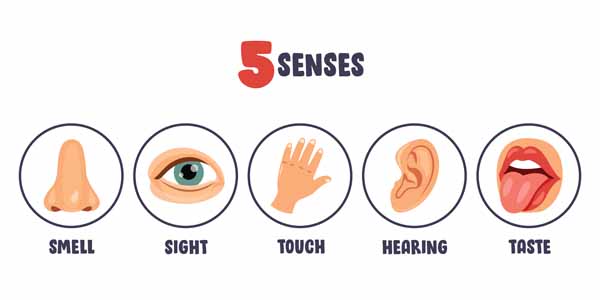
Children not only learn about their body parts for kids but also discover how these parts work. For example, eyes are not just for seeing, but also for enjoying colours, books, and friends’ smiles. Ears help us listen to music, stories, and voices of loved ones. By connecting body parts to the five senses, children get a deeper understanding of their role in daily life. Interactive activities like smelling flowers, tasting fruits, or playing sound-matching games reinforce these concepts beautifully.
Also Read: Facts about Human Skeletal System
Basic Body Parts for Kids
Children usually start with the most visible and familiar parts of their body. These basic body parts for kids are easy to teach through songs, games, and activities.
Head
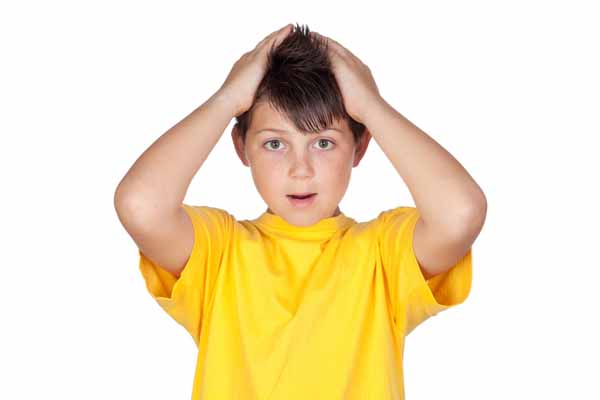
The head is one of the most important body parts for a kid’s head. It holds the brain, which helps us think, and it is also home to the eyes, ears, nose, and mouth. Children love pointing to their heads in games like “Simon Says.”
Eyes

Eyes help us see the world around us. From colours and shapes to people and toys, eyes are a child’s “windows to the world.” Fun activities like “I Spy” are a wonderful way to teach the role of eyes.
Ears
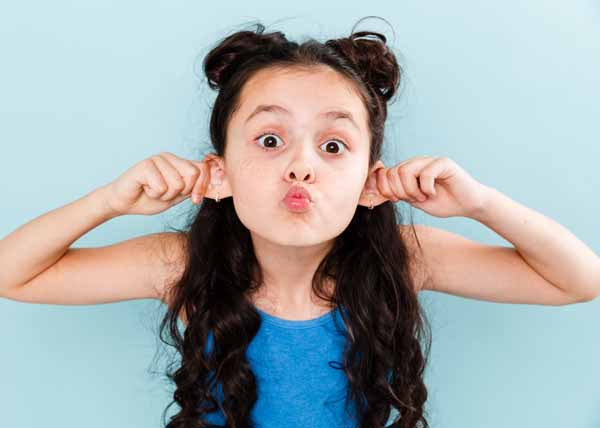
Ears help us listen to sounds, voices, and music. Teaching children about their ears makes them more attentive and encourages active listening during stories and songs.
Nose
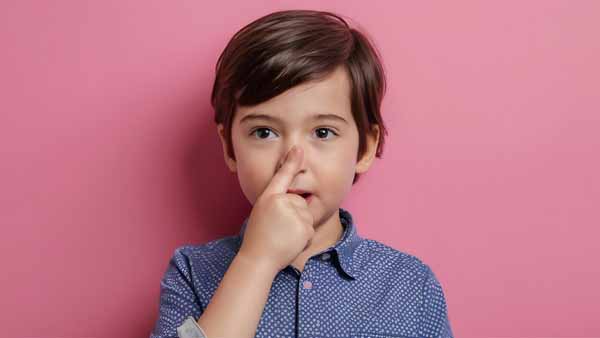
The nose helps us smell and breathe. Whether it’s the sweet scent of flowers or the smell of favourite foods, noses are a fun body part for children to recognise.
Mouth

The mouth helps us talk, eat, and smile. It’s also where children learn about healthy habits like brushing teeth.
Hands

Hands are used for clapping, drawing, building, and waving. Activities like hand painting or clapping games make children more aware of their hands.
Legs
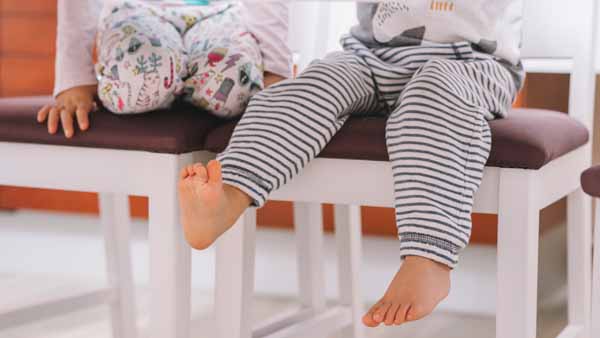
Legs help us stand, walk, run, and jump. Kids quickly learn about their legs during active play and outdoor games.
Feet
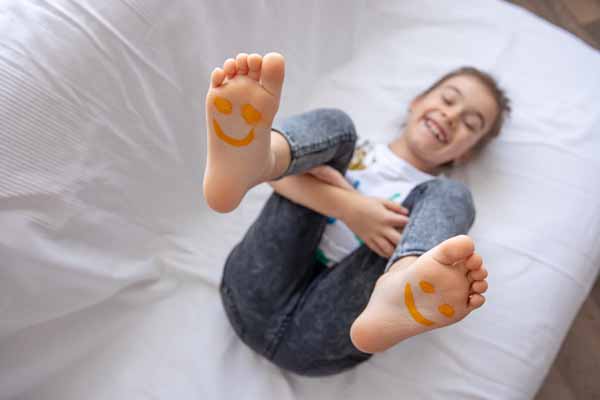
Feet are essential for balance and movement. Tiptoe walking, hopping, or dancing are fun ways to explore the use of feet.
Human Body Parts Names with Functions
It’s important not only to know the names but also the function of body parts for kids.
External Body Parts
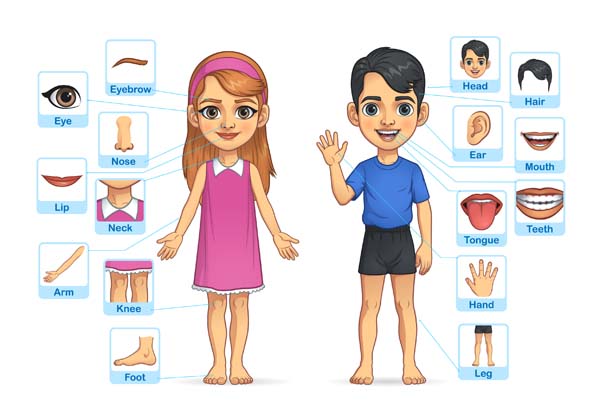
External parts are the ones we can see and touch. The head helps us think, the hands let us grab and create, and the eyes allow us to see. These external parts connect children directly to their daily activities.
Internal Body Parts
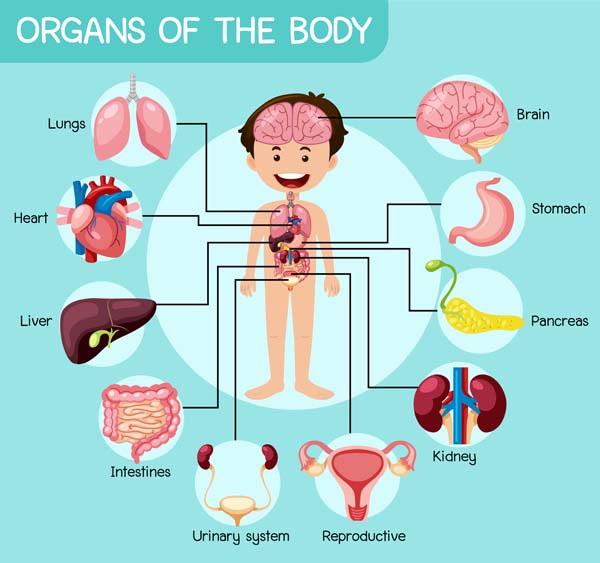
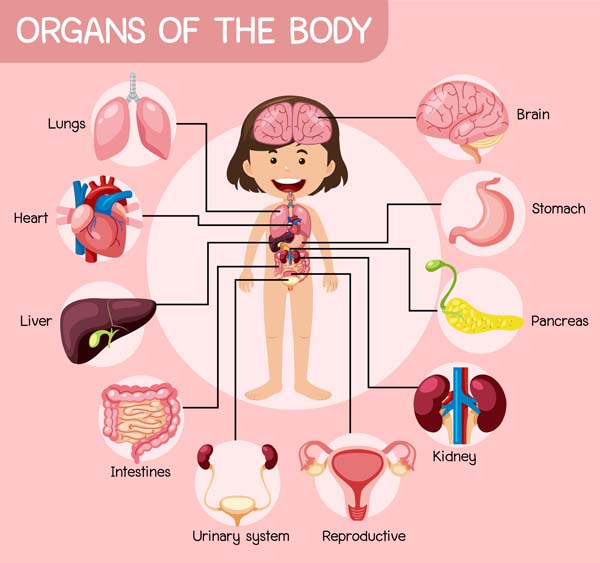
Internal body parts for kids are those we cannot see but are vital for life. The heart pumps blood, the lungs help us breathe, and the body parts stomach for kids teaches them about digestion. At EuroKids, such lessons are explained in simple, child-friendly language.
Body Parts Chart for Kids
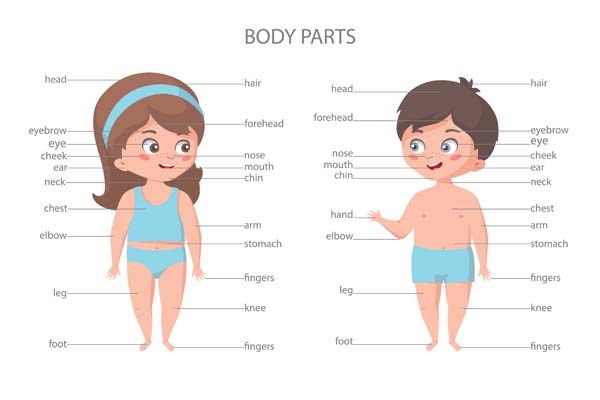
A body parts chart for kids is a simple and effective teaching tool. With colourful images and labels, charts make it easy for children to identify and name each body part. These charts are perfect for classrooms or home learning corners.
Parents can also provide printable versions for children to colour or revise. A body parts for kids worksheet adds extra fun, giving kids a chance to practise recognition and naming at their own pace.
Body Parts Worksheets & Matching Activities
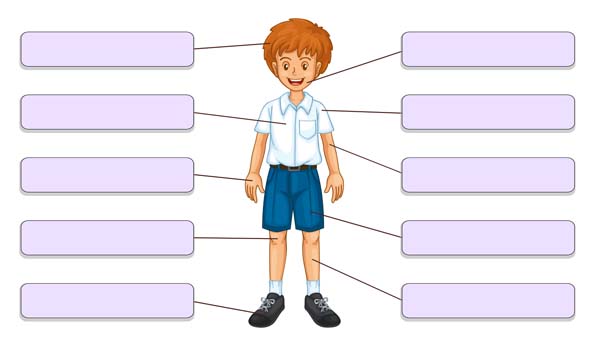
Worksheets bring learning to life. A body parts for kids worksheet may include colouring activities, labelling exercises, or puzzles. These worksheets encourage children to observe and think carefully.
Body parts matching for kids is another effective way to reinforce knowledge. Children can match the word “mouth” to its picture or pair the word “feet” with an illustration. These exercises improve memory, word recognition, and observation skills.
Also Read: Names of Face Parts and Fun Learning Activities
Fun Activities to Teach Body Parts
Simon Says (touch your nose!)
This playful activity is one of the best ways to teach basic body parts for kids. Commands like “Touch your ears” or “Clap your hands” make learning enjoyable.
Songs & Rhymes (e.g., “Head, Shoulders, Knees, and Toes”)
Music and rhymes make concepts easy to remember. Children love singing and dancing while learning names of body parts.
Flashcards
Flashcards with body parts images for kids are excellent for quick recognition. Children can play games like “Name this part!” to build confidence.
Drawing and colouring body parts
Kids can learn faster by drawing and colouring. For example, colouring hands or feet in worksheets makes them more attentive to details.
Teaching Safety Through Body Awareness
Knowing my body parts for kids is also important for safety. Children who can clearly identify and name their body parts find it easier to communicate if they are hurt or feeling unwell. More importantly, it helps in teaching the concept of “safe and unsafe touch,” which is essential in today’s world. At EuroKids, teachers use age-appropriate stories and role-play to gently instil this awareness, ensuring children feel safe and empowered.
Also Read: Easy Body Awareness Activities For Kids
Commonly Missed Body Parts
Sometimes children forget about certain parts of the body. Teachers and parents can make these fun to learn too.
Neck

The body parts for kids’ necks connect the head to the rest of the body. It helps us turn our head and hold it up.
Stomach

The body parts stomach for kids explains digestion in a simple way, the stomach helps to “store and break down” food.
Elbows
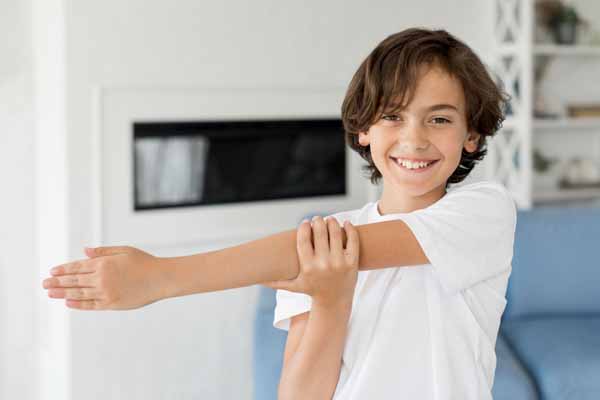
Elbows make it possible for hands to bend and move easily. Simple games like stretching arms can make children aware of elbows.
Knees
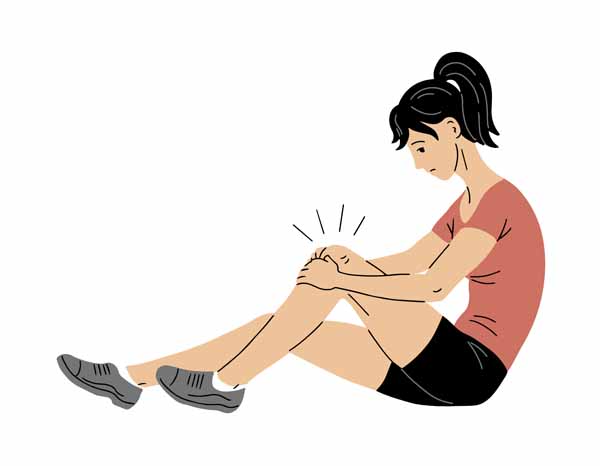
Knees help us bend our legs to walk, run, and jump. Kids enjoy learning about knees through jumping or crawling games.
Wrists

Wrists connect hands to arms, helping us rotate and move them. Drawing circles in the air can help kids notice their wrists.
Also Read: Teaching Human Body Systems to Students
FAQs About body parts labeled for kids
What are the basic body parts every child should know?
Children should first learn about the head, eyes, ears, nose, mouth, hands, legs, and feet. These are the basic body parts for kids.
How can I teach body parts to my toddler effectively?
Use songs, rhymes, body parts charts for kids, and fun activities like “Simon Says.” Toddlers learn best through play.
Are there any worksheets to teach body parts to kids?
Yes, printable body parts for kids worksheet options include matching, colouring, and labelling. These make learning fun and interactive.
At what age should kids learn about internal body parts?
Children as young as 4 or 5 can begin to understand simple internal body parts for kids, like the heart, lungs, and stomach, explained in easy terms.
What is the best activity to teach body parts at home?
Games like “Touch your nose,” flashcards, and drawing activities are effective. Worksheets and charts also help.
Discover EuroKids Early Learning Programs
Whether your child is just starting out or ready to explore more advanced learning, EuroKids has age-specific programmes designed to build foundational knowledge through fun and interactive methods.
- Toddler Programme – For babies taking their first steps in learning.
- Playgroup Programme – Structured fun and foundational concepts.
- Nursery Programme – Building strong basics including language & science.
- EuroJunior Programme – Expanding concepts through active learning.
- EuroSenior Programme – Prepares your child for primary school success.
Conclusion
Teaching body parts for kids is a simple yet powerful way to build their self-awareness, communication skills, and confidence. With engaging activities, stories, and everyday interactions, parents can make this learning journey both fun and meaningful.
At EuroKids, we focus on creating a joyful and play-based environment where every child learns at their own pace. To explore more insightful parenting tips and child development resources, don’t forget to visit the EuroKids Blog. And if you’re considering giving your little one the best start in their learning journey, check out the details on EuroKids Admission to see how we can be the right partner in your child’s growth. Enroll now to kickstart your child’s joyful learning journey!
Related Blogs For You
Body Tracing for Kids : Body tracing is a playful way to help children learn about their body parts. In this blog, you will discover fun activities where kids lie down on large sheets of paper and trace their outlines. Through colouring, labelling, and decorating, children not only recognise body parts but also build creativity and motor skills. Body tracing for kids makes learning interactive and exciting.
Discover the 78 Organs in the Human Body : The human body is full of wonders, and this blog helps children explore it in a simple, age-appropriate way. By breaking down the 78 organs into easy explanations, kids get to know what each organ does and why it’s important. With engaging visuals and activities, this blog turns science into a fascinating journey for young learners.
Facts About Human Body for Preschoolers : Children are naturally curious about themselves, and this blog brings them closer to that curiosity with fun human body facts for preschoolers. From learning why the heart beats to understanding why we sneeze, the blog makes early science enjoyable and memorable. These simple facts spark interest and encourage kids to ask questions about their amazing bodies.
Kids’ Digestive System : The digestive system may seem complex, but this blog explains it in a way kids can easily follow. Using stories and everyday examples, it shows how food travels through the body and gives us energy. Understanding the kids’ digestive system not only teaches science but also encourages healthy eating habits from an early age.





